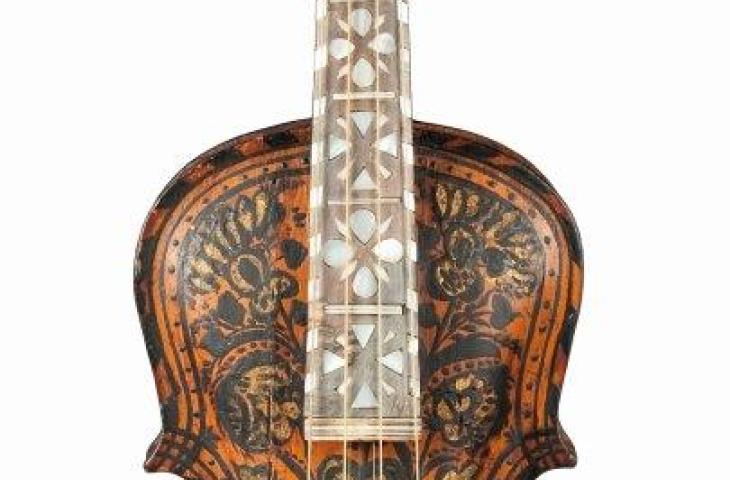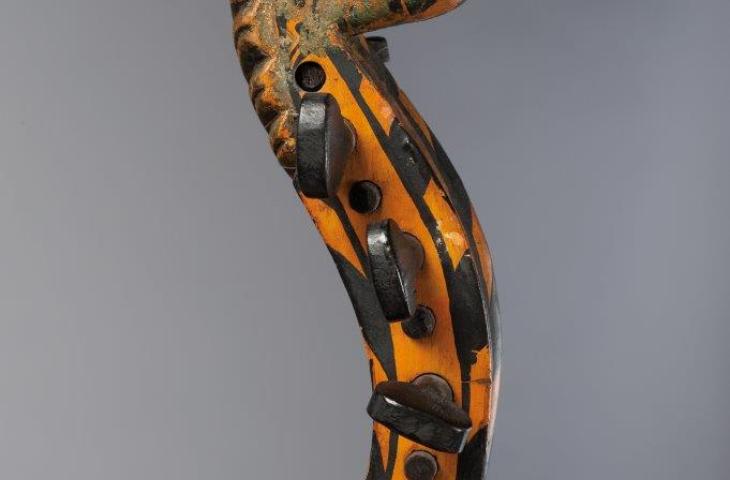Hardingfele

Hardingfele, Norway, restored and embellished by J.C.L. Ruwold in 1812, inv. 1329
Hardingfele

Hardingfele, Norway, restored and embellished by J.C.L. Ruwold in 1812, inv. 1329
The hardingfele or Hardanger fiddle – Hardanger being an area near to Bergen in Norway – stands out through its extravagant decoration. The finger-board and the tailpiece are inlaid with mother-of-pearl and the sound-box is painted with flowers in Chinese ink. A meagrely decorated hardingfele was thus regarded as an incomplete instrument. Within the sound-box of the example pictured is the following inscription: ‘This violin was restored, refurbished and embellished by me in the month of February, minstrel J.C.L. Ruwold 1812’. The hardingfele was generally used to accompany dancing. With its bewitching tones, it also played the part of ‘narrator’, bringing great heroes from the past to life and evoking the sphere of fairies and trolls, and of forests and mountains.
Just as the violin, the hardingfele is played with a bow. It differs from the violin through having resonating strings beneath the melody strings, vibrating with them. They ensure a continuous and rich sound that some even describe as ‘ecstatic’. There are also the numerous magical stories in which the instrument figures and it is even claimed that the music of the hardingfele can cause objects at a distance to move.